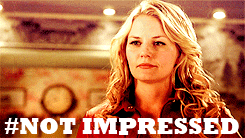No, It's Not Like Throwing a Frisbee
Hello again! As you might have guessed this post is not about a TV Show (though I could probably find a movie or show that involves what I'm going to talk about). I actually want to talk about the physics behind throwing a discus. The discus throw is one of the events I compete in with the school track team, so in honor of our first meet yesterday I decided to do a blog post on it. A "disc" or discus looks like this:
The larger radii are for men while the smaller, lighter discus are for women. First things first: how does one throw a disc? The most important part of throwing a disc is releasing it in a way that creates back spin. The spinning motion stabilizes the discus in flight. The faster the disc spins as it leaves the hand of the thrower, the greater the angular momentum and the more stable the flight. This keeps the disc from wobbling and tilting on its axis as it flies, helping to maintain lift which prolongs flight time. This is called gyroscopic stability. The goal of this sport- of course- is to throw the farthest so the longer the flight time, the better.
I can't find a good image to show you, but the disc is shaped similarly to the wings of an airplane. Due to this shape, the disc gains lift due to increasing wind speed, helping the disc to travel further in windy conditions. That does not mean that wind is necessarily good for a discus throwing, in fact the even is cancelled (at least at the high school level) in high winds. The discs are affected by wind speed and direction (the greater lift comes from the speed of the air moving around the disc) and they're very light (1 kg for a girls disc) and thus strong winds in any direction to the right or left of movement of the disc can push it off course a rather large and scary distance, which can injure spectators or runners on the track. This happened at a meet last year, luckily our runner out ran the falling disc and she never noticed until after her race that the disc had nearly hit her. Interestingly though, a headwind- a wind directly opposing the disc- can actual add up to 25 ft of distance (as opposed to wind in the direction of the disc's movement. This has to due with the combination of aerodynamic lift and gyroscopic stability.
So, that's a quick, basic look at the discus throw. There are tons of cool videos and explanations online that get even more in depth into how the sport looks, in case you want to learn more.
If you're wondering about the title, I've had one too many people say something like "Oh, you mean you throw it like a Frisbee right?". No, I do not throw it like a Frisbee. That would not be safe.

That's all I have. Thank you for taking the time to read this!



0 Comments
Recommended Comments
There are no comments to display.